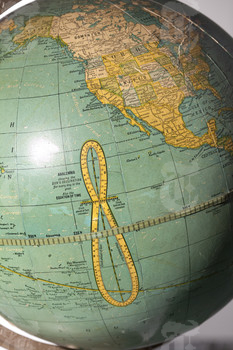Well almost. Around the June solstice, the sun is at it's most northern declination, i.e. in the northern sky. Around the December solstice, the sun is at it's maximum southern declination (southern sky).cindy4444 wrote:I still do not understand the reason why the top is smaller in the northern hemisphere. In the northern hemisphere, In the summer, (closer to aphelion) , the sun will be south but higher in the sky than in the winter(perihelion).
Since at aphelion the earth is moving slower, the big loop must be at the top as you look south to the horizon. There is no way it could be otherwise.
No, around the June solstice (aphelion), the slower moving sun (and lower acceleration) results a smaller loop in the northern sky, and therefore north of the big loop.
The small loop (northern sky) will be "below" the large loop for a southern hemisphere observer looking towards the northern horizon, thus the analemma appears upsidedown (downside upIn the southern hemisphere you look north at noon (when I assume these measurements are made) to get the position and the lowest point (winter there near aphelion--summer here in the north) will be lower above the northern horizon than it is in the summer. This will make the lower loop bigger as it appears in your pictures.
Bottom Line: The analemma is fixed in celestial coordinates with the small loop is (always) north of the big loop for all observers on earth.
You might recall the analemma has been displayed on earth globes for over a century. Note, on a globe, the latitude maps directly to zenith declination
In addition to the Wiki link, you might find this analemma website instructive.
